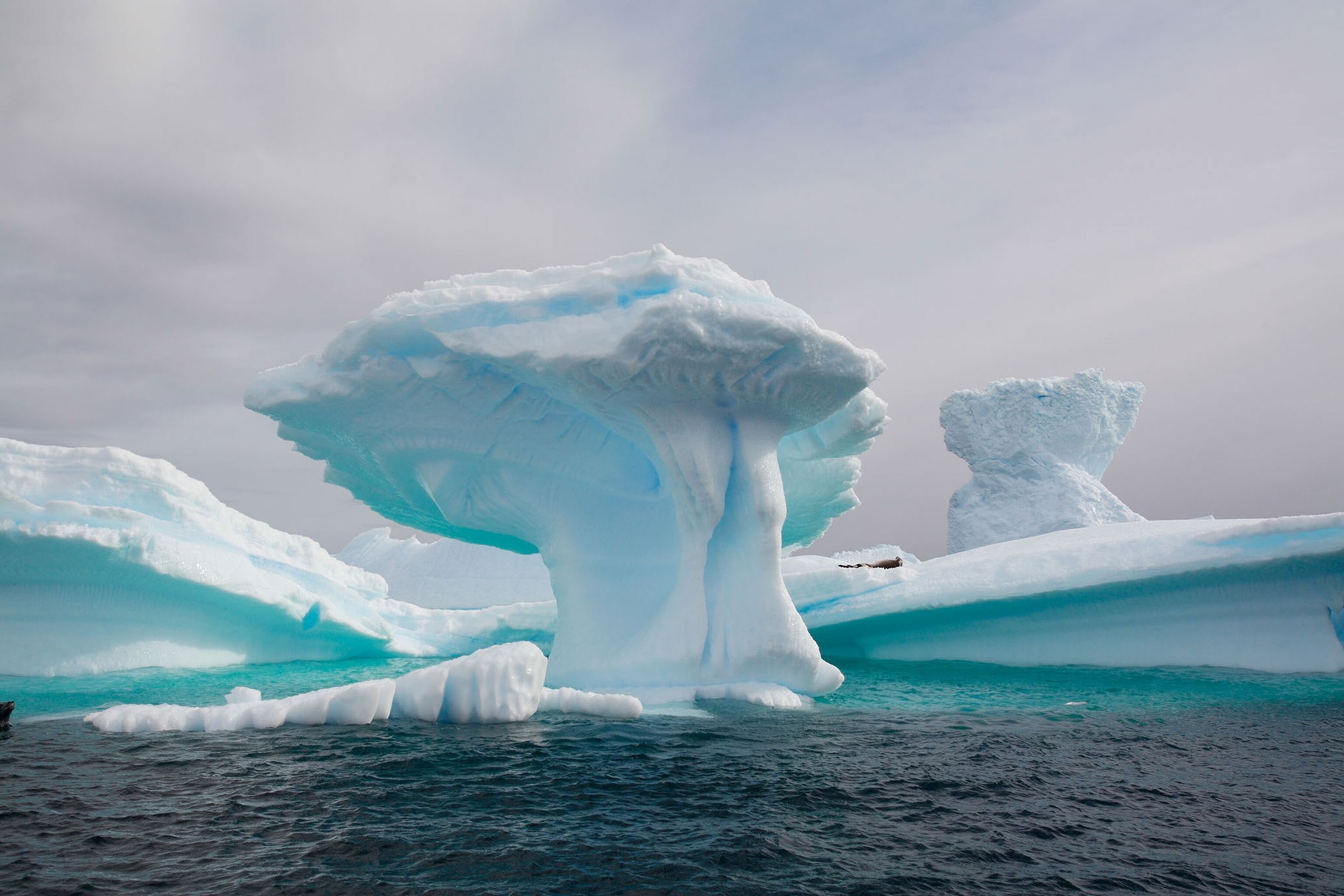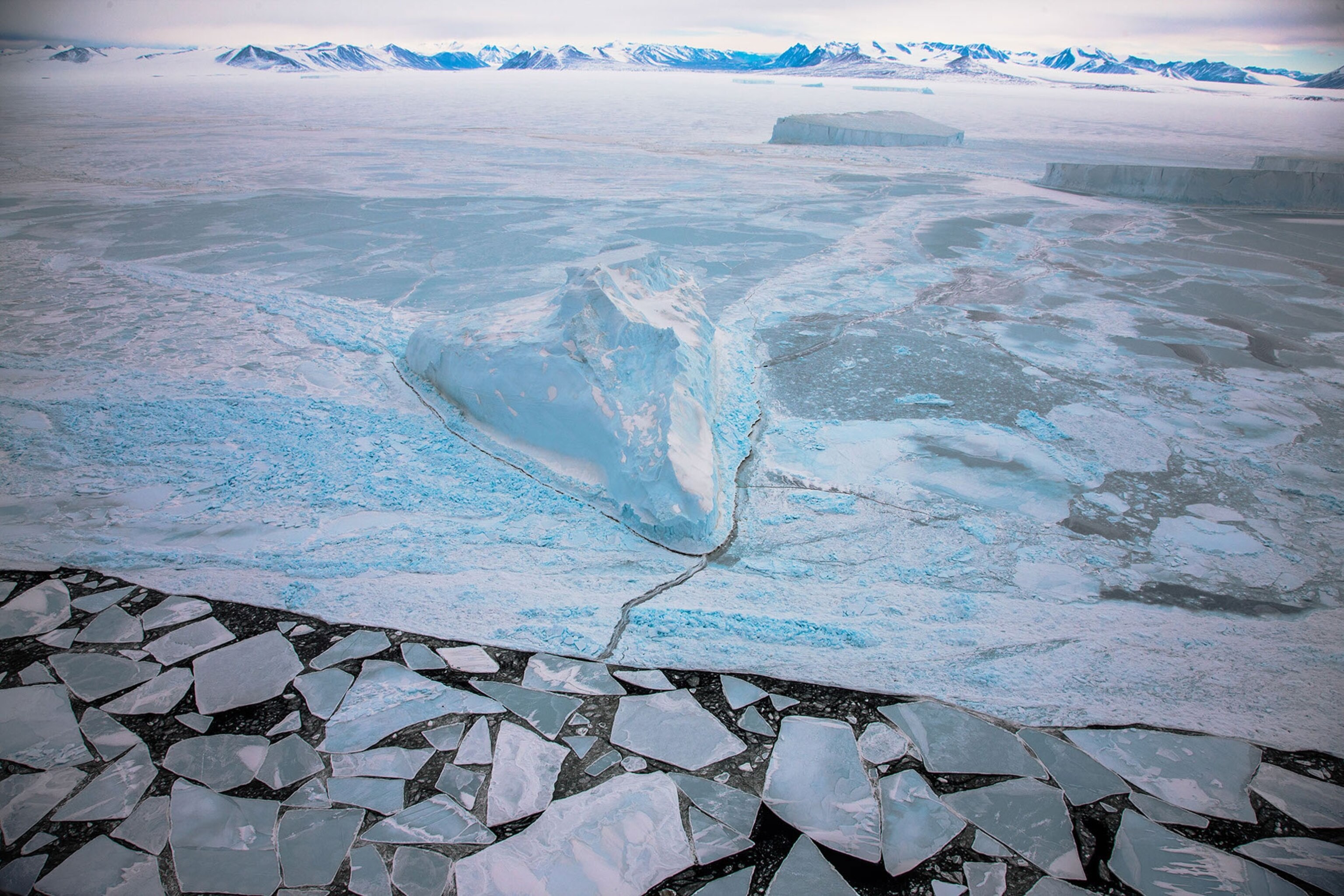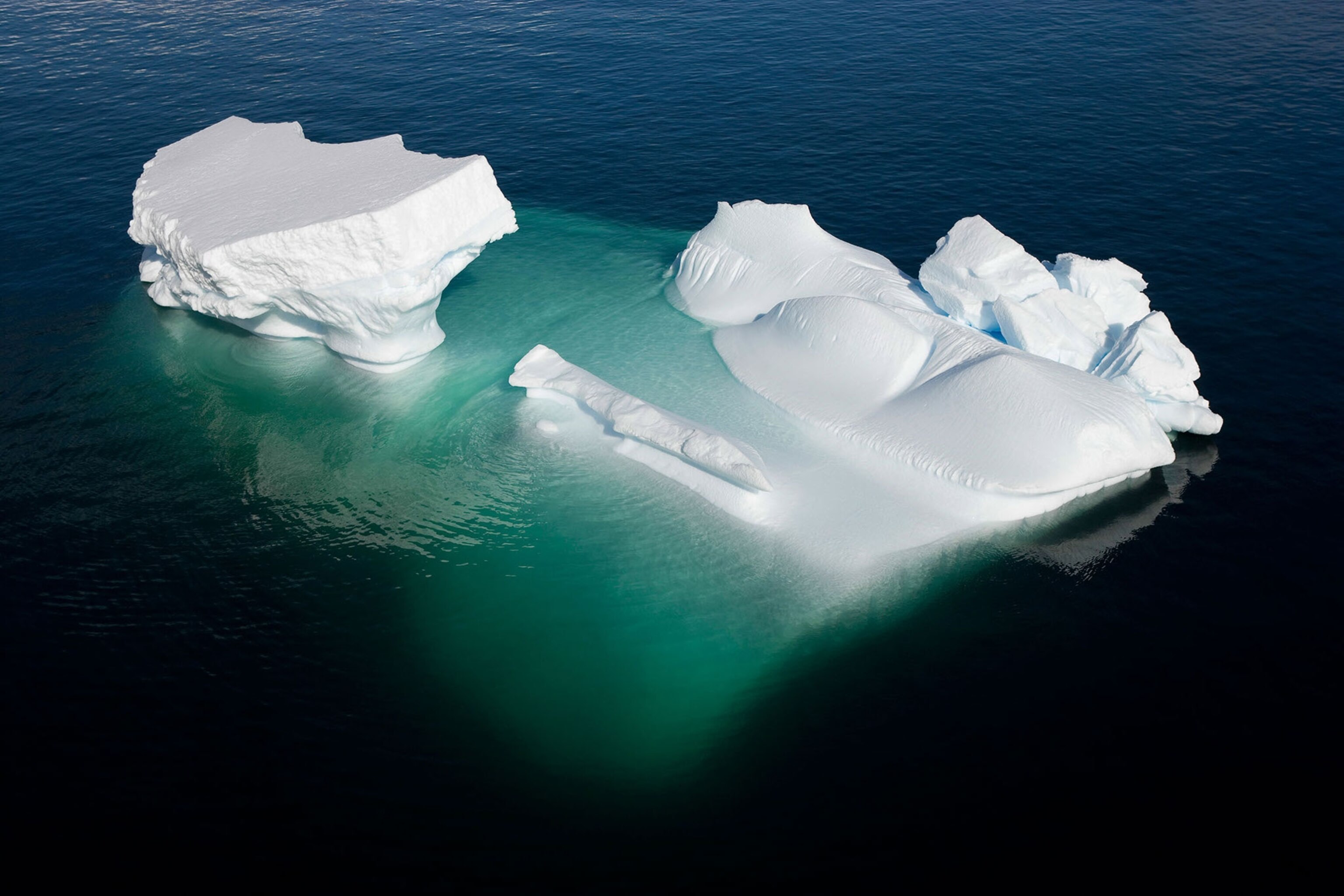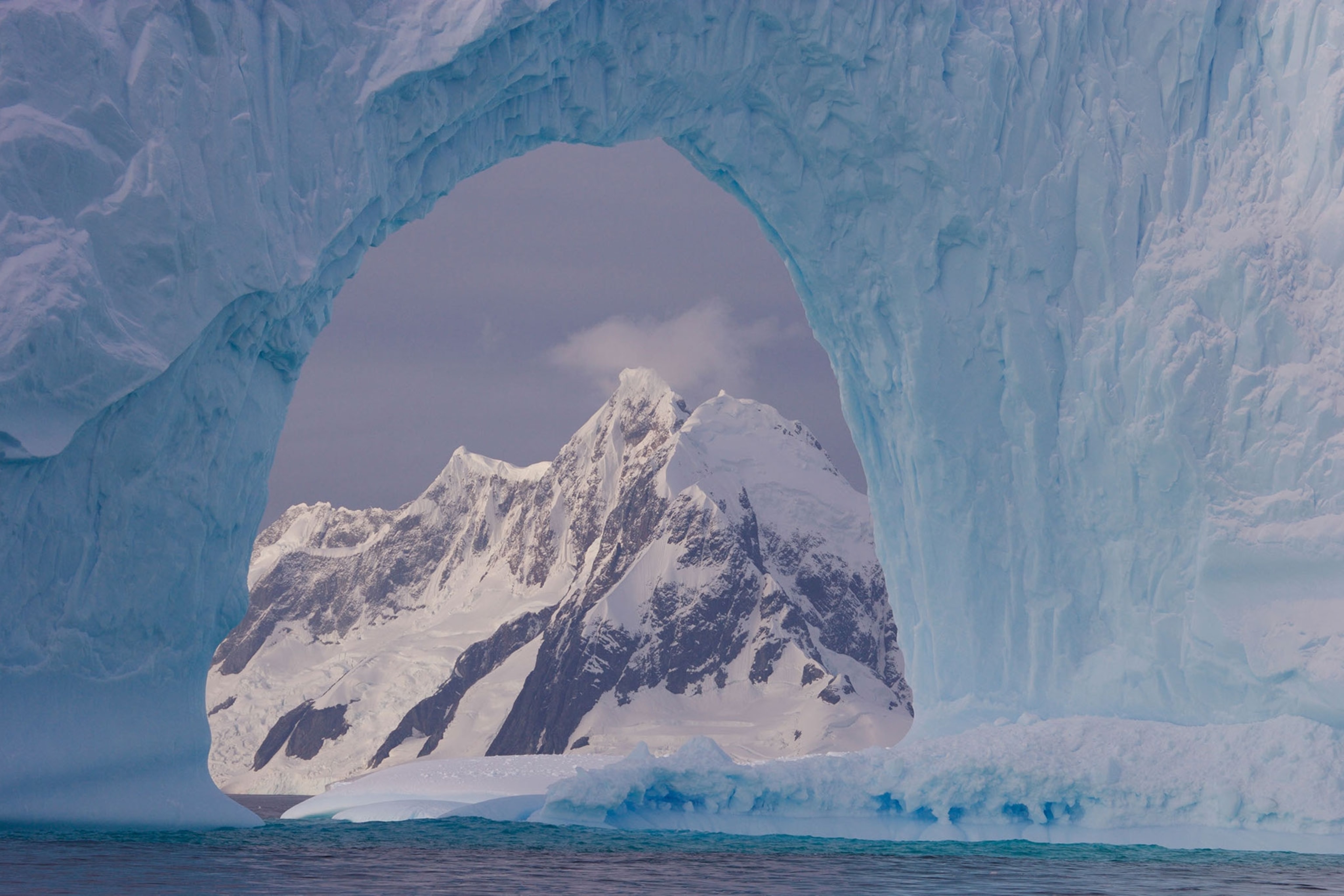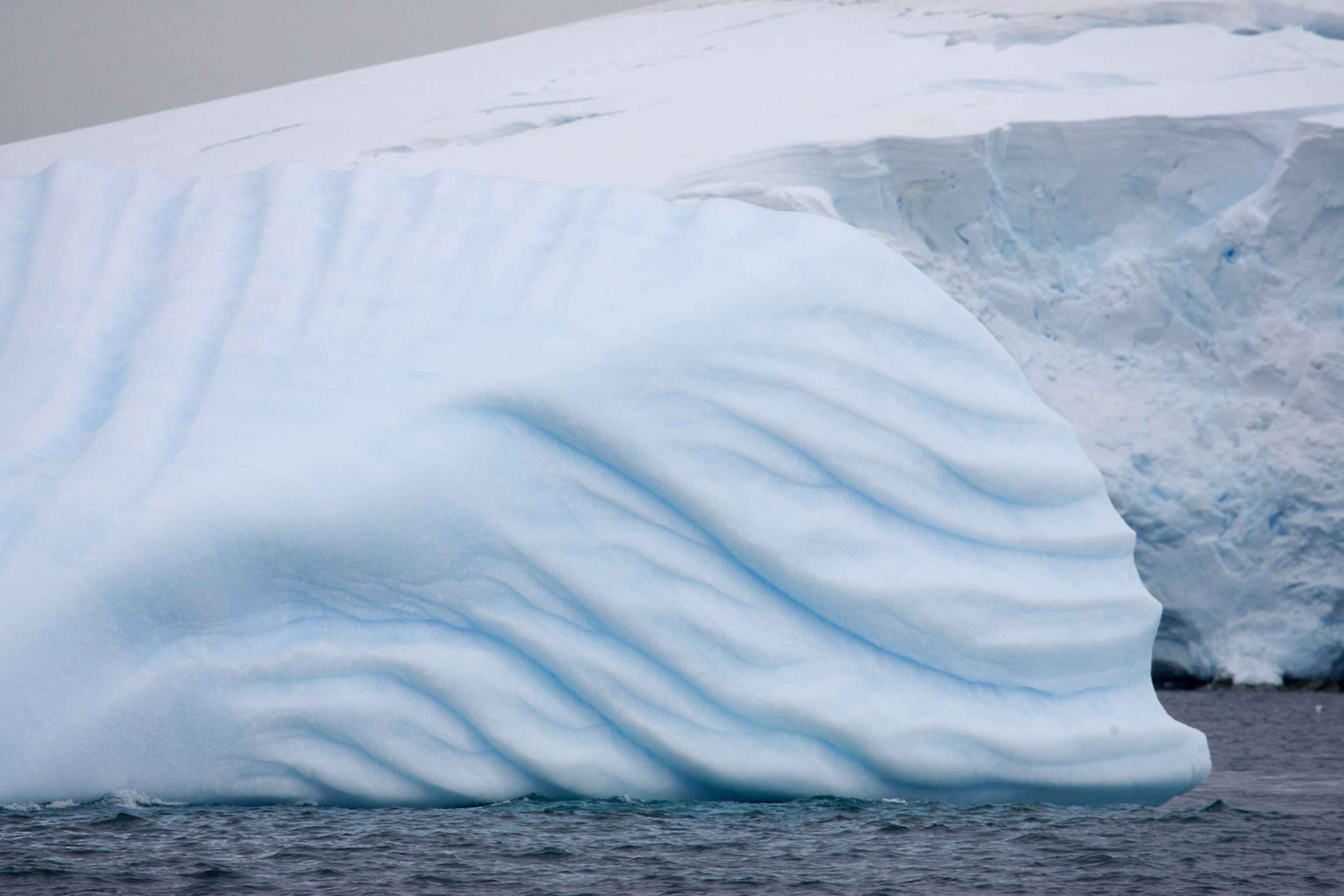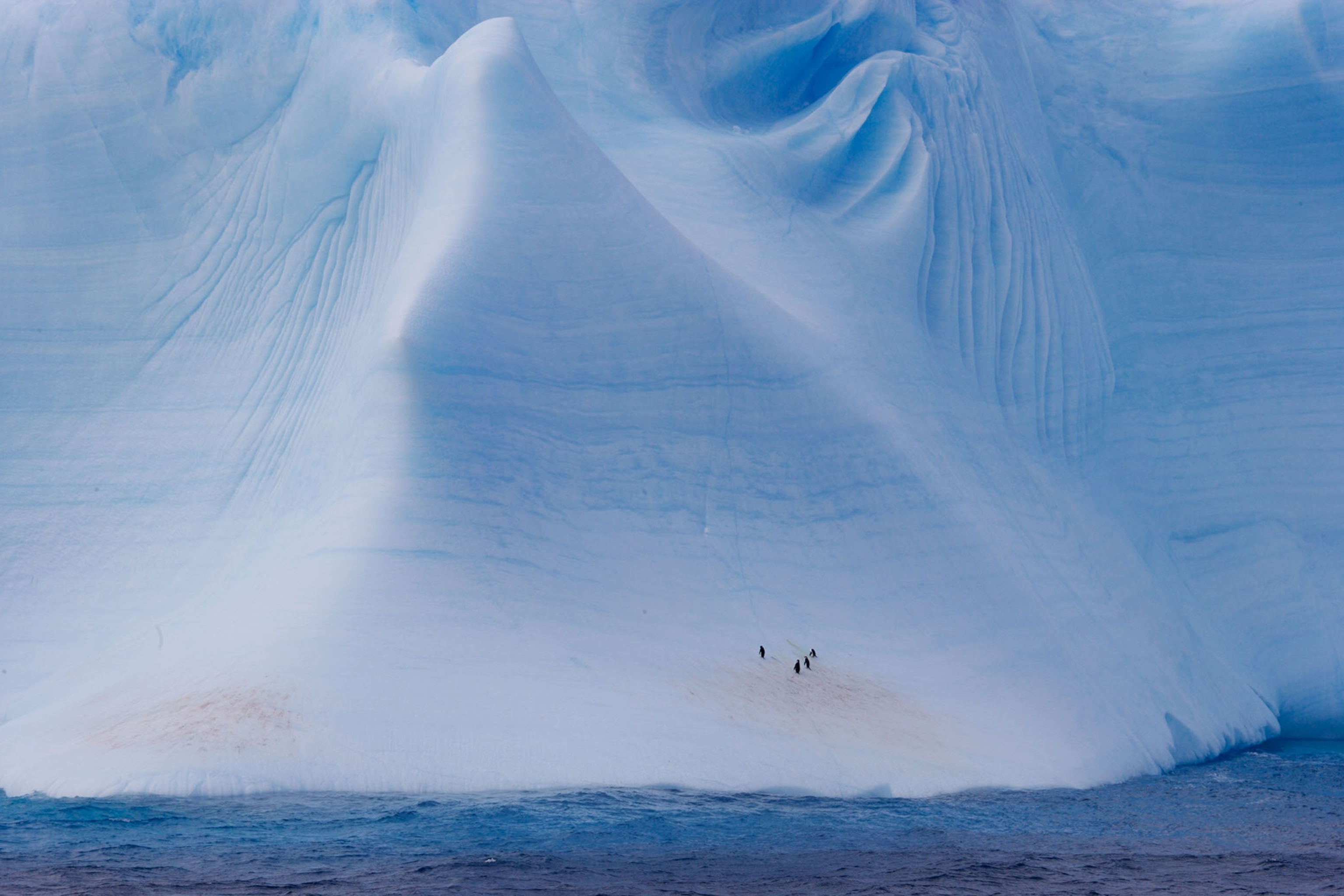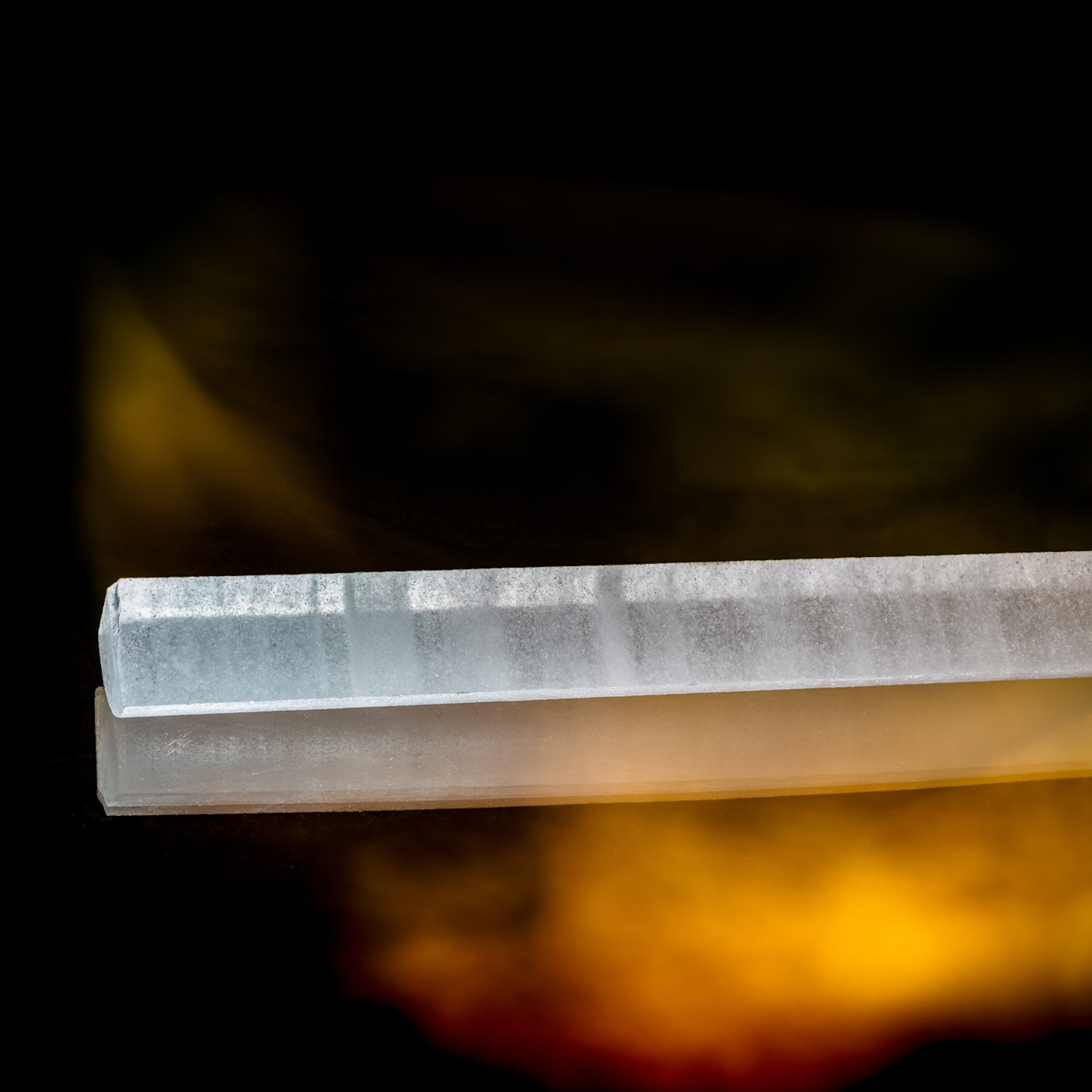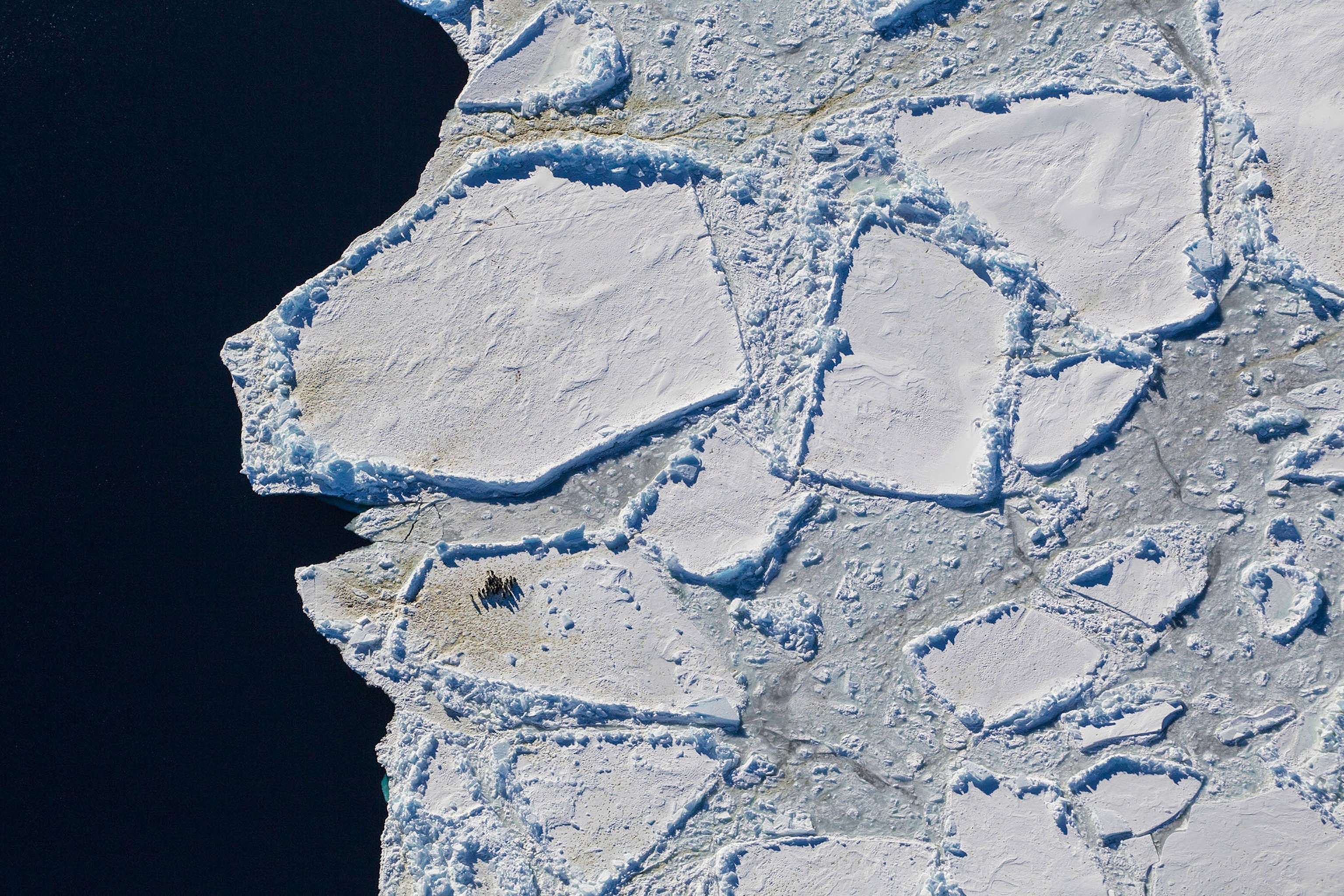
Scientists Are Watching in Horror as Ice Collapses
Everything we learn about ice shows that it is disturbingly fragile, even in Antarctica.
The soldiers at Matienzo Base in Antarctica made an odd discovery in January 1995—an antique dog sled, unlike any they had ever seen, bound together by leather straps, with a label reading “Made in England.”
Matienzo was an Argentine research base on a small island 30 miles off the coast of the Antarctic Peninsula. It was surrounded by a vast plain of white—a slab of glacial ice, 700 feet (215 meters) thick, that floated on the ocean. That floating slab, called Larsen A Ice Shelf, covered an area of water the size of San Francisco Bay. It had existed for a thousand years or more. But this hot summer it looked strange. The men had to go onto the ice shelf to collect snow for drinking water, and it made them uneasy.
The ice shelf was crisscrossed with narrow cracks—which the men nervously jumped over—and dotted with deep blue melt ponds. It was there, protruding from a melt pond, that they found the sled. It must have been discarded by a British expedition that passed through decades before.
That old sled turned out to be an omen of disaster, like a long-buried coffin that resurfaces when a city is ravaged by floods. It showed that Larsen A had been quietly deteriorating for years.
Discarded so long ago, the sled should have been buried under many feet of snow, but a series of hot summers had melted it free. Melting of the ice shelf’s protective skin of snow had re-exposed old wounds. The cracks that the men jumped over were deep crevasses that had formed on the surface centuries before, been buried under tens of feet of snow, and then re-emerged. The hot summers had also damaged Larsen A in another way: As the meltwater refroze each winter, the shelf's porous upper layers condensed into a watertight barrier of ice, which was capable of accumulating increasingly large melt ponds during the summers.
In February 1995, a few weeks after the sled was discovered, these odd symptoms converged catastrophically. Larsen A shattered like a windshield into thousands of icebergs, each larger than an aircraft carrier. Booms erupted from the fracturing ice, and the island shook. The 10 soldiers feared that their island would break from its foundations, roll into the ocean, and kill them all.
The disintegration of Larsen A, which I wrote about for Scientific American in July 2012, unfolded over a period of just hours. The soldiers at Matienzo Base watched in horror but were not injured.
The catastrophic collapse of Larsen A and several other ice shelves along the Antarctic Peninsula has yielded important lessons about the vulnerability of Antarctica’s ice sheets to a warming climate. A new analysis of ice sheet instability, published March 31 in Nature, took the public by surprise when it projected that global sea level might rise six feet by 2100, and as much as 40 to 50 feet by the year 2500. (Read "Why the New Sea Level Alarm Can't Be Ignored.") That study seemed to double, overnight, the amount of sea level rise that can be expected. But many glacial scientists weren’t surprised. The new estimate is based on insights that have emerged slowly, over 20 years, in the aftermath of these ice shelf collapses.
The Aftermath of an Ice Shelf Collapse
Explore the fjords along the northeastern Antarctic Peninsula today, and it’s easy to find landscapes that look scarred even to the casual observer. The walls of these canyons remind me of lacerated skin where the scab was torn off. When I explored one of these fjords on foot, in 2010, the scar ran along the walls of the fjord—swaths of gray gravel and stone that looked pale compared with the darker, browner mountains above.
The lower reaches of the canyon walls were pale because the rock had only recently come in contact with sunlight and air. Until 15 years ago, these slopes were covered by thick glacial ice. The glacier, now absent, had retreated several miles into its fjord. The fjord used to hold 2,000 feet (600 meters) of ice. Now it held 2,000 feet of seawater instead.
The aftermath of an ice shelf collapse is obvious in Sjögren’s fjord. When the ice shelf in front of Sjögren disintegrated in 1995, it removed the buttress that stabilized the glacier. The glacier started sliding into the sea at twice its original speed. Sjögren erupted in crevasses and thinned by several hundred feet as it stretched. After a few years, the glacier had retreated miles into its fjord as icebergs splintered off the glacier’s front faster than the ice could flow forward.
A similar scenario has unfolded each time an ice shelf has disintegrated along the peninsula, with some glaciers streaming into the sea at up to nine times their former speed. And as tens of billions of tons of ice spill from land into the ocean, the Earth’s crust is springing up from beneath like a mattress when a weight is removed—a tectonic uplift exceeding half an inch (1.3 centimeters) per year in some places.
Robert DeConto, of the University of Massachusetts in Amherst, and David Pollard, of Pennsylvania State University, have been trying to predict the fate of Antarctic ice. Their first computer model of ice sheets, released in 2009, faithfully reproduced 40 cycles of collapse and rebirth of the West Antarctic Ice Sheet over the last five million years. Those collapses, as ice ages waxed and waned, were driven by changes in Earth’s orbit around the sun. But, says DeConto, “There was always this nagging in the back of our minds.” Their model had nailed the timing of when ice sheets retreated—but not the magnitude of those retreats.
It showed Antarctica sweating off enough ice to supply only three and a quarter feet (one meter) of sea level rise during a warm period 120,000 years ago. But evidence from ancient, raised beaches shows that sea level rose 20 to 30 feet (6 to 9 meters) above current levels during that time. And for a warm period three million years ago, it showed Antarctica contributing just 16 to 23 feet (5 to 7 meters) of sea level rise—far below the estimate of 32 to 115 feet (10 to 35 meters) based on geologic evidence.
“So we knew something was missing,” says DeConto.
See Stunning Photos of Antarctica's Ice
That’s where the story of melted-out sled comes in. Every ice shelf that disintegrated along the Antarctic Peninsula has shown the same pattern: summer melting of its top layers, winter refreezing of those top layers into icy crusts able to hold large melt ponds, and the re-exposure of long-buried crevasses.
For all of these ice shelves, the moment of death occurred suddenly. Each collapse began when water from the melt ponds drained into the crevasses. The weight of the water drove the cracks deeper—like a wedge, says Ted Scambos, a glaciologist with the National Snow and Ice Data Center at the University of Colorado in Boulder, who discovered the process. These fluid wedges eventually broke through the bottom of the ice shelf, calving off one iceberg, then another and another—a process called hydrofracturing that can devour an ice shelf nearly the size of Rhode Island in a matter of hours or days.
The sudden removal of the ice shelves brought glaciers as thick as 3,000 feet (915 meters) face to face with the ocean—a situation that doesn’t normally occur. “Ice is not a particularly strong geologic material,” says Scambos. With sheer ice cliffs towering as high as 300 feet above water, “the ice starts to fracture.” Crane Glacier, which was exposed by the loss of one of the Antarctic Peninsula ice shelves, underwent successive collapses of ice cliffs into the fjord, each time exposing another, often taller ice cliff behind it, leading to further collapse. The same thing was seen for two glaciers in Greenland.
DeConto and Pollard built these processes of melt ponding, hydrofracture, and cliff collapse into the new ice sheet model that they published last month. Their simulations predict a shocking future—up to six feet (nearly two meters) of sea rise by 2100 means hundreds of millions of people displaced from coastal cities worldwide.
Redrawing the Map of Antarctica
What struck me during my first visit to Antarctica, in late 2007, was just how sensitive its ice seemed to be—even deep in the interior of the West Antarctic Ice Sheet where we camped that year, 600 miles (1,000 kilometers) from the ocean, just 400 miles (640 kilometers) from the South Pole. My single-person tent became uncomfortably warm in the mornings as its red canvas absorbed sunlight. The thermometer hanging over my head often read 70 or 80°F—once, even 98°F. Over the course of five weeks, my tent melted the snow beneath it and sank a foot.
While doing chores around camp, one could see that melting happened often here, even when humans weren’t around. When I dug a pit in the snow to shelter a propane generator from the wind, my shovel hit hard layers cemented with refrozen meltwater. One ice layer, 18 inches (46 centimeters) down, had formed the previous summer. The next layer, 18 inches farther down, was from the summer before that—and so on. It suggested, to me, just how sensitive these ice sheets are to small changes in the environment.
Ice loss may have begun at a narrow beachhead in Antarctica, at the north end of the Antarctic Peninsula, but it has expanded on multiple fronts, as new regions of ice come into play every several years. As warm summer temperatures push farther south, so will the problems of melt ponding, ice shelf disintegration, and ice cliff collapse, which drive the rapid retreat of ice. (Read more about how calving causes mini-tsunamis daily in Antarctica.)
Scattered melt ponds already appear on some of the ice shelves that surround the Antarctic mainland, much farther south than any that have collapsed so far. The amount of ice lost each year from all of Antarctica’s ice shelves has increased 12-fold between 1994 and 2012.
Aside from warm air, the fringes of Antarctica’s ice are under assault from another source—warming ocean currents that melt the undersides of ice shelves. (Read more about research on what climate change will mean for whales.)
I recall a bumpy ride on an airplane on October 12, 2008. The Chilean Naval Orion P3 was flying low along a remote coastline of West Antarctica. Below us was a mess of glacial ice cut and diced with crevasses large enough to swallow houses. The proportions were vast, and yet it resembled chopped spaghetti. The plane was retracing precise GPS lines that had been flown several times since the 1990s, measuring ice thickness, in hopes of monitoring changes over time.
At some point I looked out the window and realized that our plane had veered out past the coastline. We were now flying over ocean, with the edge of the ice sheet visible a few miles to the south. It seemed we had drifted off course. I hurried to a computer monitor to check our position and nearly ran into a researcher who was doing the same. We stared together at the monitor. Our plane was indeed still on course, flying a GPS line that was first flown in 1996. The line hadn’t moved. But the ice had. The ice had retreated by miles—and our map was already obsolete.
Douglas Fox is a freelance writer who specializes in polar science; his stories have taken him to Antarctica five times in recent years.

